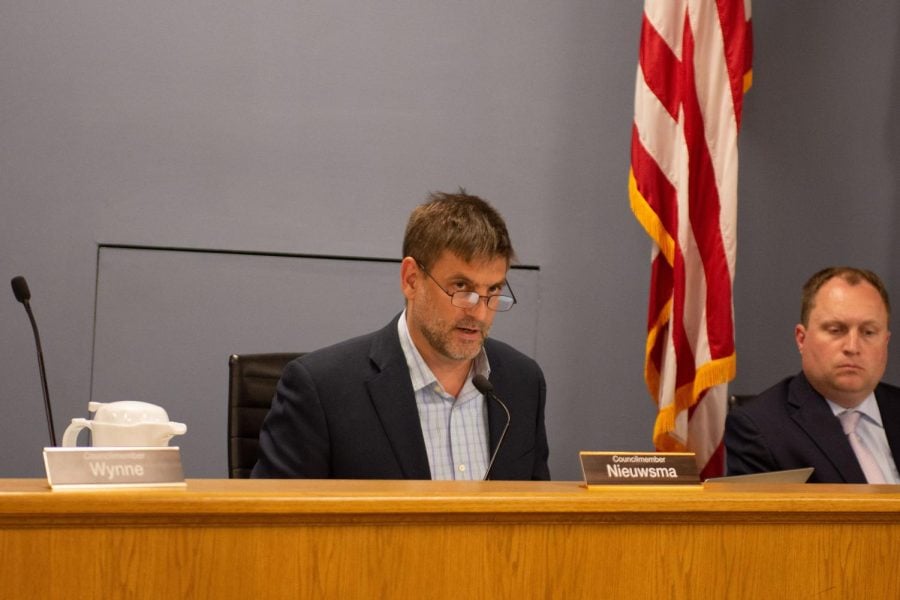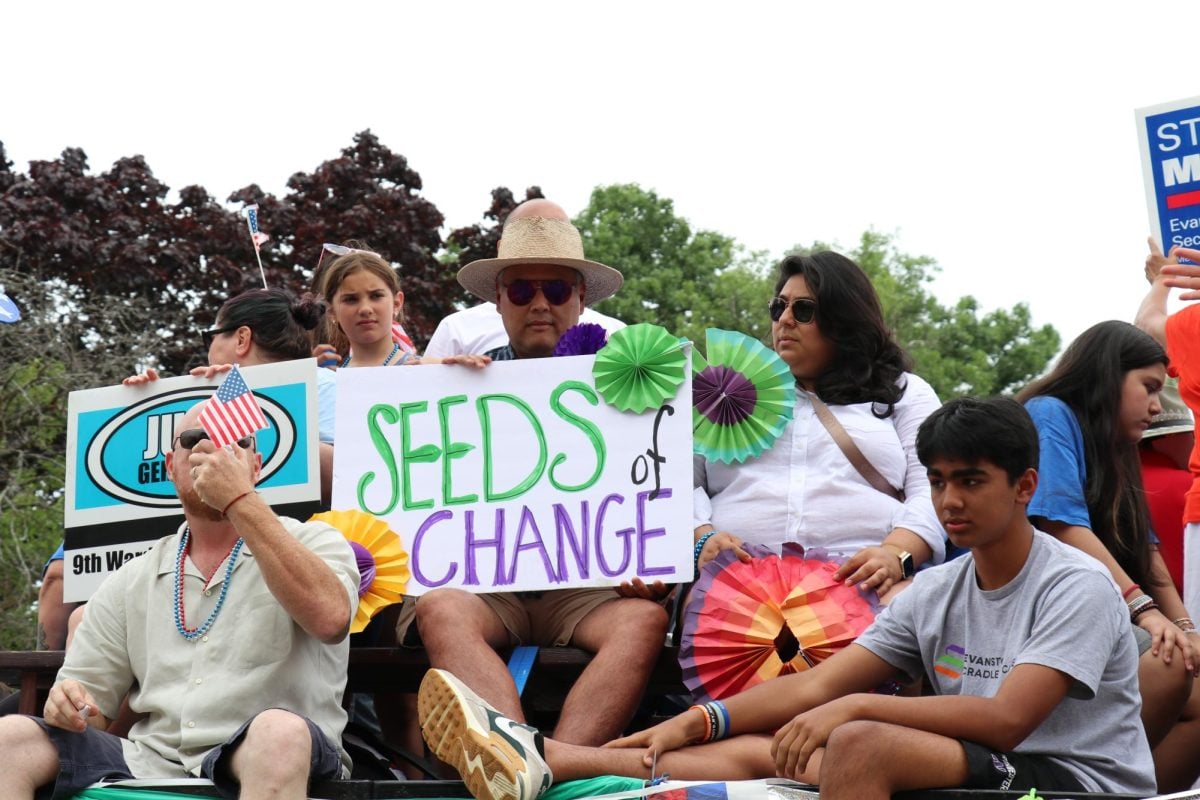Brainstorm: Background on the bunnies
May 4, 2022
From the Lakefill to the quads, bunnies are hopping their way into the hearts of Northwestern students. In this episode of Brainstorm, The Daily spoke to Northwestern students, a professor and an urban ecology expert to answer the question gnawing at Evanston residents: What’s with all the bunnies?
SASHA EDEN GOLDBERG: I feel like being on a college campus, you don’t really see dogs and cats like you would at home or something like that. So being able to see just these cute little fluffy things everywhere really enhances my college experience and just brings a little ounce of happiness to my day.
ZELLA MILFRED: That’s Weinberg junior Sasha Eden Goldberg, a biology major on the pre-veterinary track. She’s talking about an animal who makes its home on Northwestern’s campus, and is perhaps more beloved than Willie the Wildcat.
[music]
ISABELLE BUTERA: From The Daily Northwestern, I’m Isabelle Butera.
ZELLA MILFRED: And I’m Zella Milfred. This is Brainstorm, a podcast exploring all things science, health and tech. In this episode, we’re talking about the eastern cottontail rabbit, the type of rabbit that lives all over our campus.
ISABELLE BUTERA: The eastern cottontail is a generalist species. That means these bunnies can eat any kind of vegetation, including grasses, vegetables and even bark in the winter.
ZELLA MILFRED: Their versatility means they can survive in many habitats — including urban ones.
PAUL CARADONNA: Evanston is certainly an urban environment. There are lots of places that might be quite nice for a bunny to live.
ISABELLE BUTERA: That’s NU professor of plant biology and conservation Paul CaraDonna. He said the rabbits thrive in the campus environment.
PAUL CARADONNA: There’s bushes around all the buildings, you know, it’s sort of a mix of, maybe not large parks or anything around campus, but plenty of natural vegetation all over the place.
ZELLA MILFRED: But this can be an issue for local gardeners. Zach Watson is a recent NU graduate and former president of the community Wild Roots Garden on campus. Zach, who still volunteers at the garden, has a mixed relationship with the campus’ furry visitors.
ZACH WATSON: Wildlife is very important to the functioning of a garden. We need animals and insects that pollinate our produce, for example. But at the same time, animals like bunnies tend to eat the produce that we grow.
ZELLA MILFRED: To adapt to bunnies looking for a snack, Wild Roots uses garden boxes of varying heights to plant different kinds of crops. Members have seen many animals near the garden, including skunks, squirrels, robins and birds of prey.
ISABELLE BUTERA: Still, Zach says the animal they see most often is the eastern cottontail rabbit. They recently found a group of baby bunnies in one of the garden boxes.
ZELLA MILFRED: A large bunny population isn’t necessarily unique to Evanston. SustainNU’s program coordinator Cria Kay said this is because rabbits do what they are famous for: reproduce.
CRIA KAY: We’re actually in the middle of breeding season, which is why a lot of Northwestern community members might be seeing more cottontail rabbits than usual.
ISABELLE BUTERA: Cria said campuses across the Midwest generally have a good diversity of shrubs and grasses. Beyond being part of their diet, this vegetation serves as nesting areas during mating season.
ZELLA MILFRED: And it helps that bunnies on campus are safe from natural threats.
PAUL CARADONNA: I don’t tend to see, you know, large predators like coyotes or things like that, so I would guess that the bunnies are unchecked, in a sense. There’s no predator to sort of reduce their populations.
[music]
ZELLA MILFRED: Bunnies are more than just abundant on campus. They also appear to be relatively comfortable coming close to students.
ISABELLE BUTERA: CaraDonna said this might be because the rabbits don’t want to waste energy running away from approaching students, especially given the frequency of these encounters.
PAUL CARADONNA: So perhaps with some time and conditioning, they sort of reduce the energy to sort of run away because they know like, okay, humans at that distance, you know, seems to be okay, it’s happened a bazillion times, and I’ve never been hurt.
ZELLA MILFRED: With a noticeable bunny population comes a large bunny fan base. More than 600 NU students are members of a group chat called “nu bunny watching” on the messaging platform GroupMe. Sasha is one of them.
SASHA EDEN GOLDBERG: I honestly love seeing the bunnies around, like who doesn’t. Every time I see them I’m like, “Oh my gosh, it’s a bunny, hi bunny!”’ And I just smile every time.
ZELLA MILFRED: Sasha said the NU bunny watchers connect by sending pictures of wildlife from various places around campus. Bunnies are out and about most often during dusk and dawn.
SASHA EDEN GOLDBERG: It’s just became a really wholesome group full of animal lovers, and every time I see a picture, it just brings a smile to my face because there’s so many of these students just appreciating these little animals running around, and it’s really cute.
ZELLA MILFRED: Cria shared her insight from working for the Lincoln Park Zoo’s Conservation & Science department on how wildlife adapt to living in cities like nearby Chicago.
CRIA KAY: So, there’s a really deep tradition and community around studying urban wildlife in the city. So it’s an exciting place to be for urban wildlife, particularly being in such a big city that has such a diverse landscape within it.
ZELLA MILFRED: Although baby bunnies are irresistibly cute, Cria reminds students not to feed or meddle with natural wildlife — they can become too comfortable around humans and put themselves into dangerous situations. Instead, she encourages members of the NU community to continue appreciating our neighborhood cottontails from a safe distance.
CRIA KAY: Cities really are places for wildlife too, and I think it can be a really beautiful thing to remember that we live in an urban ecosystem, and this is also an ecosystem, and wildlife are all around us. It can be a really nice way to kind of connect with our natural environment to take a pause and notice the animals that are around us.
[music]
ZELLA MILFRED: From The Daily Northwestern, I’m Zella Milfred.
ISABELLE BUTERA: And I’m Isabelle Butera. Thanks for listening to another episode of Brainstorm. This episode was reported and produced by Zella Milfred and myself. The audio editor of The Daily Northwestern is Lucia Barnum, the digital managing editors are Will Clark and Katrina Pham and the editor in chief is Jacob Fulton. Make sure to subscribe to The Daily Northwestern’s podcasts on Spotify, Apple Podcasts or SoundCloud to hear more episodes like this.
Email: [email protected]
Twitter: @isabelle_butera
Email: [email protected]
Twitter: @ZMilfred
Related Stories:
— Students create group chat to document rabbit sightings around campus
— Lakefill beavers unite Evanston residents on their daily pandemic walks












